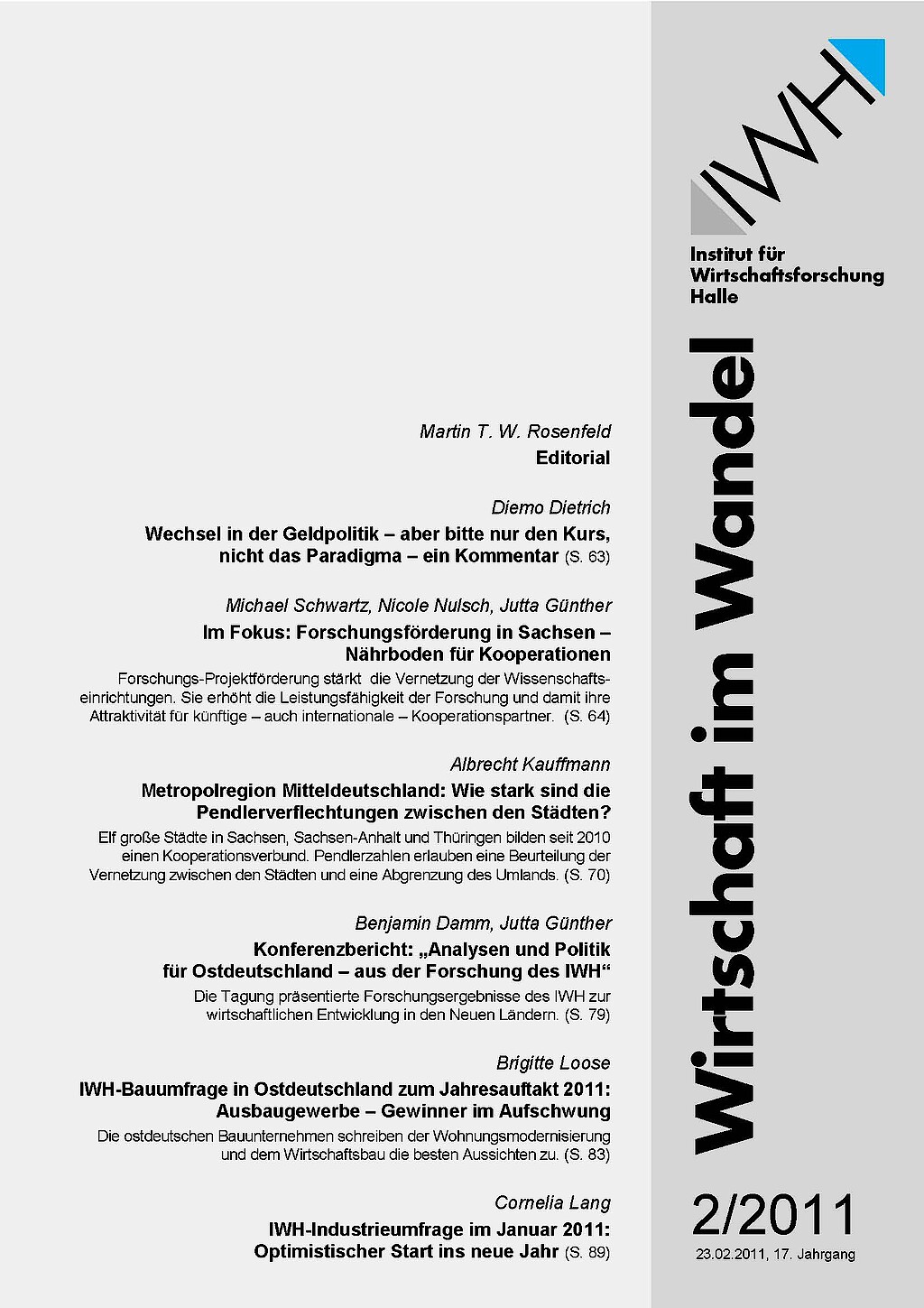
Metropolitan Area „Central Germany“: How Strong are the Commuting Flows between the Cities?
Die Metropolregion Mitteldeutschland ist ein Bündnis zur Kooperation zwischen den großen Städten in den Ländern Sachsen, Sachsen-Anhalt und Thüringen. Angesichts der Vielzahl der beteiligten Städte sowie der großen Entfernungen zwischen den Städten an den Rändern und dem geographischen Zentrum der Region stellt sie einen Sonderfall innerhalb der derzeit elf in Deutschland existierenden Europäischen Metropolregionen dar. Eine Besonderheit ist auch der Umstand, dass bislang eine Festlegung des Umlands der Kernstädte fehlt. Der Beitrag untersucht die Vernetzung zwischen den beteiligten Städten anhand von Pendlerverflechtungen. Darüber hinaus werden erstmals mögliche Abgrenzungen des Umlands der Metropolregion Mitteldeutschland im Sinne einer funktionalen Stadtregion diskutiert. Es erweist sich, dass die Vernetzung innerhalb der vormaligen Metropolregion Halle/Leipzig-Sachsendreieck und der Thüringer Städtekette deutlich stärker in Erscheinung tritt als die Pendlerbeziehungen zwischen diesen historisch gewachsenen Regionen. Als funktionale Stadtregion besäße die Metropolregion Mitteldeutschland ein weit gespanntes, jedoch eher dünn besiedeltes Umland, das nur mit den nahegelegenen Kernstädten enge Verflechtungen aufweist. Insgesamt zeigt sich, dass zwischen den traditionell einander näher stehenden Städten eine bessere Basis für Kooperationen vorhanden ist, deren verstärkte Nutzung dem Anliegen der Metropolregion Mitteldeutschland jedoch nicht zuwiderlaufen muss.




